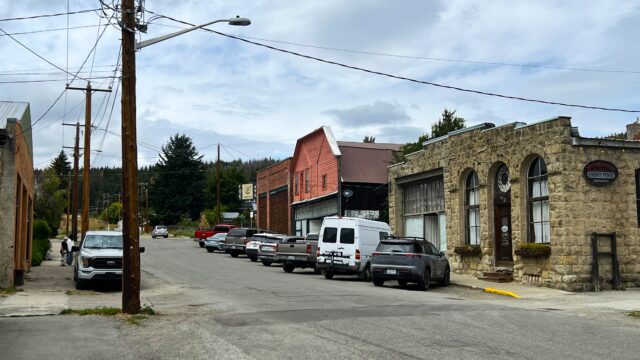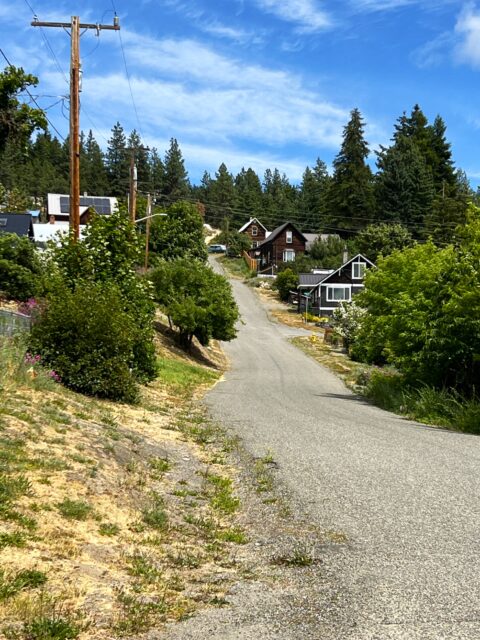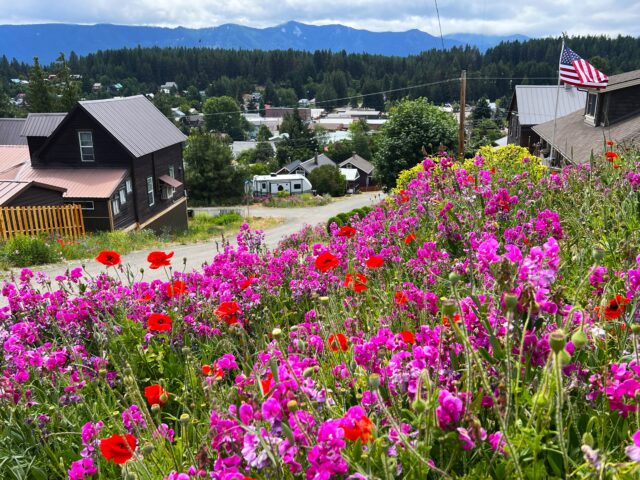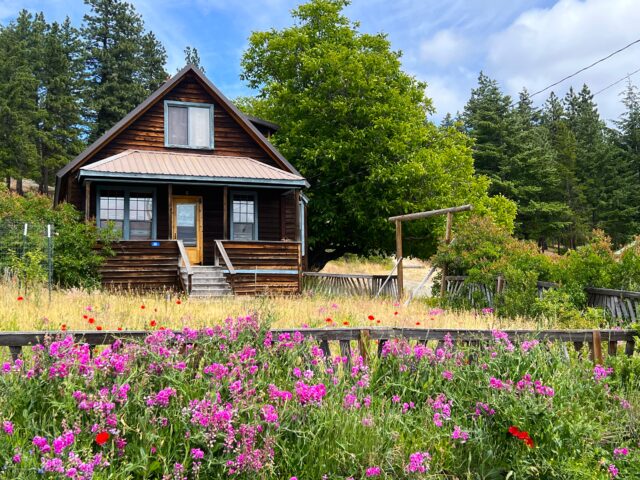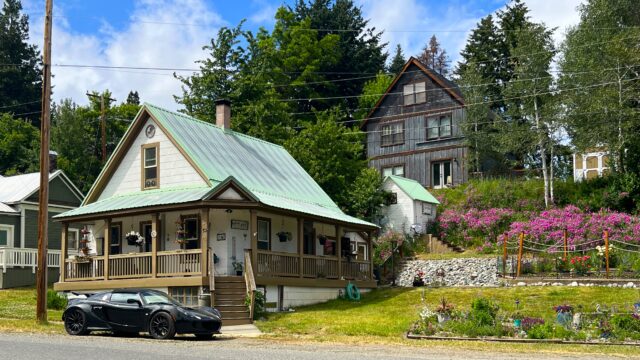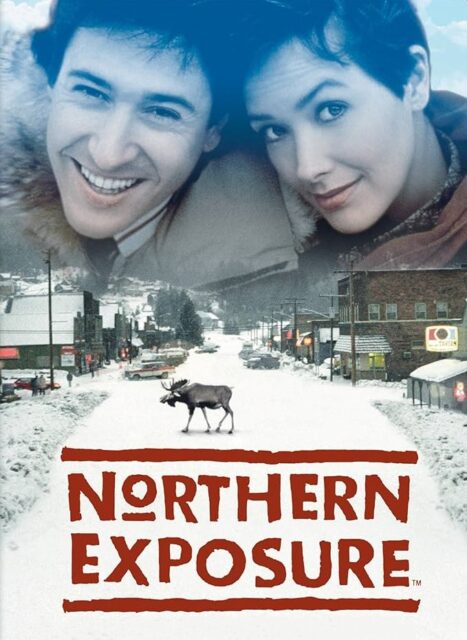
A long, long time ago, at some point during my last semester in college, I began watching a TV program called Northern Exposure. The show centered around Joel Fleischman (played by Rob Morrow), a young and newly graduated doctor from New York City. As part of the setup for the show, it was established that as a prospective medical student Joel found himself short on funds and somewhat desperate–so he financed his medical education with a scholarship program sponsored by the State of Alaska. In exchange for his schooling, Joel agreed that he would provide his medical services in Alaska for a period of four years after graduation.
Upon accepting this agreement, and all through medical school, Joel’s expectations were that he would be assigned to a position in a hospital or clinic somewhere in suburban Anchorage–the largest city in Alaska. And while Anchorage is no New York City, young Joel believed that it would be cosmopolitan enough that he would be able to endure his obligation to Alaska without suffering through too much culture shock.
Once in Alaska, however, Joel is taken aback to learn that the plans have changed. Instead of setting up an office in Anchorage, Joel would be assigned to work as a general practitioner in the small town of Cicely, located on the cusp of the so-called Alaskan Riviera.
Reluctantly, Joel agrees to go to Cicely, hoping to make the best of things–but also fully prepared to bail if he cannot. Once there, he discovers a backwater hamlet of 839 souls, surrounded by stunningly beautiful scenery, and loaded with quaint, small town charm. Right away he begins to encounter the town’s long list of eccentric, oddball, and endearing residents.
He also makes the determination–quite quickly–that this was not the place for him, and he wants out. Unfortunately, his contract with the State of Alaska was ironclad, and he was stuck. And so the premise of the show was established in the pilot episode, deriving much of its comedy and drama from Joel’s attempts to adapt to his new and alien environs.
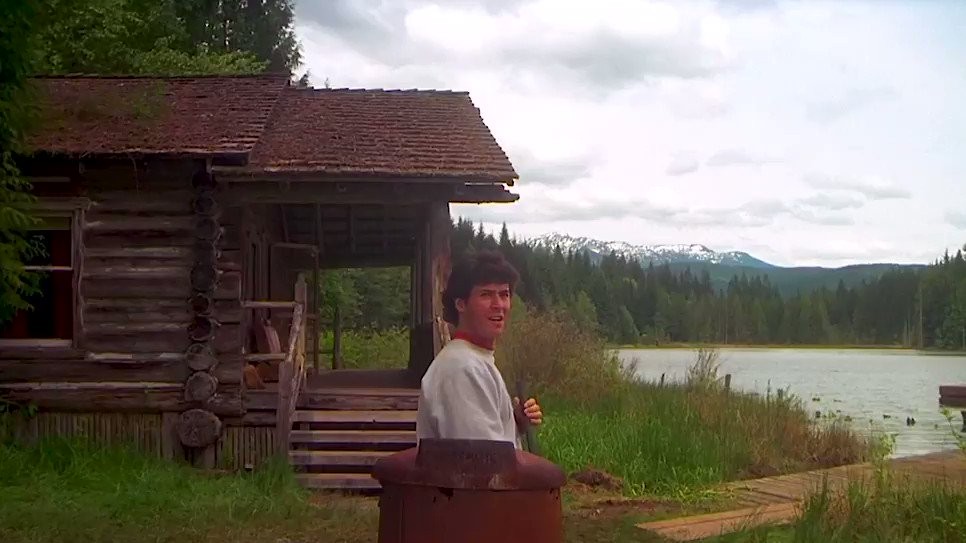
Northern Exposure first aired in the summer of 1990 and ran for six seasons. It was an hour-long comedy/drama, which–especially early on–relied on the fish-out-of-water trope, emphasizing the difficulties and frustrations Dr. Fleischman experienced in his weird new setting.
The show aspired to portray what life was like in small-town Alaska, and in some ways it did. But Northern Exposure was actually much more about looking at Alaska through the lens of New York City elite sensibilities. Episodes focused on a broad range of topics, including things like philosophy and religion, literature and music, Native American culture and mythologies, the cinema, backwoods and rural living, wealth and fame, medicine, high society, love and relationships, dreams and magic–all supported by an ensemble cast of wonderfully eccentric characters.
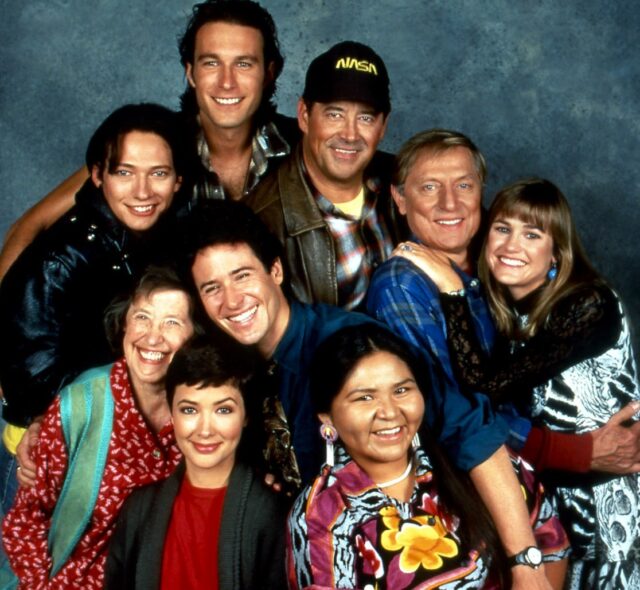
Back Row: Ed Chigliak, Chris Stevens, Maurice Minnifield, Holling Vincoeur, Shelly Tambo
Front Row: Ruth Anne Miller, Maggie O’Conner, Dr. Joel Fleischman, Marilyn Whirlwind
We’ve already met Dr. Joel Fleischman, the young, high-strung, doctor from New York City, who decidedly resents the situation that he finds himself in.
Then there is sweet Maggie O’Conner portrayed by actress Janine Turner. Maggie is a beautiful and independent minded bush pilot who acts as Joel’s love/hate interest. Their fiery relationship provides much of the energy for the show. After years of not quite getting in sync, Joel and Maggie have a heartfelt conversation, finally deciding that what they have together is most accurately characterized when the two of them are considered as “mutually desirous incompatibles.”
Next, we have Maurice Minnifield–played exceptionally well by veteran actor Barry Corbin. Maurice was a Korean War veteran–a US Marine pilot during the war. But his real claim to fame was as a NASA Astronaut during the Project Mercury era. Ultimately, Minnifield was able to leverage his celebrity as an astronaut into a great deal of wealth. After coming to Cicely, Maurice bought much of the town and surrounding land, setup a radio station, and established a newspaper–all with the hopes of one day developing Cicely into an Alaska Riviera destination resort. Maurice considers himself the town’s patriarch. Not everyone else in Cicely agrees.
Maurice’s radio station–KBHR 570 AM–needed an on air personality, and that is where Chris Stevens (John Corbett) comes in. Chris is a young drifter from West Virginia, who is also an eloquent intellectual and artist. Stevens goes by the on-air name of “Chris in the Morning.” In this capacity, Chris functions as the shows narrator, helping to stitch together the shows various diverse plotlines.
The town’s heart and soul is probably best personified by the character, Ed Chigliak (Darren E. Burrows), a young and naive Native American. Ed earns his keep doing odd jobs around Cicely–mostly for Maurice, but he is always more than willing to give anyone a helping hand. In addition, Ed has ambitions to pursue the cinema and become a film maker. He also harbors aspirations to one day become a tribal shaman.
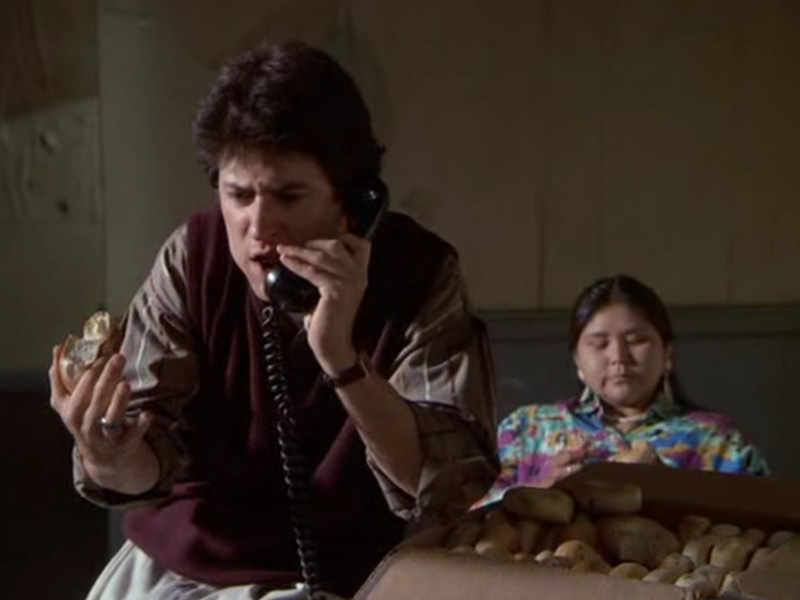
Dr. Fleischman (exasperated): We only have one line!!!
Marilyn Whirlwind (Elaine Miles) is the subdued, soft-spoken, and matter-of-fact Native American woman who works as the receptionist in Dr. Fleischman’s office. Her concise communication and reserved demeanor works as a humorous foil for Dr. Fleischman’s more driven and demonstrative personality. She always seems to have a way of getting his goat!
And then there’s Ruth Anne Miller (Peg Phillips), the wise, no nonsense, elderly woman who runs the town’s general store. Her shop is small and somewhat ramshackle, but Ruth Anne always has just what her customers need.
Finally, there was the slightly oogie May-December relationship between Holling Vincoeur (John Cullum) and Shelly Tambo (Cynthia Geary). Holling is the owner of the Brick–the town’s bar and grill, and favorite community gathering place. Well into his sixth decade of life, Holing was a seasoned outdoorsman and toughened veteran of the Alaskan backcountry. Shelly is an 18 year old beauty queen from Canada, who fell for Holling in a case of love at first sight. After partnering with Holling, she helped run the tavern, often working as a waitress. The relationship between Holling and Shelly was at times touching in their dedication to each other, and at others, a bit cringeworthy, due to their large age disparity.
Over and above the main characters, there were a multitude of secondary characters who were just as colorful and rich in oddball personality as the others. Some even more so!
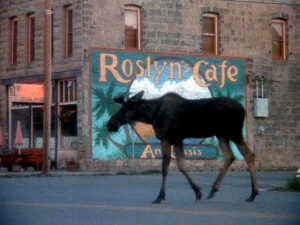
It included a fun theme song played while a moose
strolled around downtown Cicely
Northern Exposure ran for a total of 110 episode over six seasons. For some reason I never caught it during its original run. Instead, I began tuning into reruns roughly a year after the show had been canceled in primetime. I discovered Northern Exposure late one night after a long day of school and work. I was looking for something to watch that would help me to unwind and fall asleep, and I was open to trying just about anything. I stumbled across the show’s iconic intro as I channel surfed through the ten or so broadcast TV stations we had in Dallas/Fort Worth at the time. I decided to tune in.
Upon this first viewing, I found that the show had a quirky and gentle humor that I enjoyed. The episode I watched that evening didn’t work as intended. Instead of drifting off to sleep, I stayed awake all the way through to the ending credits.
The decision to tune in the following night was an easy one to make. And the night after that as well. After a few episodes I started getting hooked, and once the show had me, it really had me. Even today I count Northern Exposure as one of my all-time favorite TV programs. That’s not to say the show is perfect, however. Far from it really. Northern Exposure misses as often as it hits–maybe even a little more so. But when it is good, it is very, very good!
I only remember a couple of specific episodes from back then. The show aired five nights a week, and all in all, I probably only tuned in for a little over two months before graduation, taking a new job, changing addresses, and getting married–all in rapid succession–upended my usual schedule. That means that of the 110 episode available to watch, I only caught around 40 or so at this time. My best guess is that I started watching somewhere in the middle of the fourth season, making it through to the later part of season five. In retrospect, that was a pretty strong set of episodes, so it’s not surprising that this sampling spoke to me.
It turns out, that after losing access to Northern Exposure just shortly after I began watching, it would be decades before I would have a real chance to pick up again where I left off. The show just wasn’t available to watch anywhere–no TV reruns, and it only had a very limited presence in the video disc market.
The reason for Northern Exposure restricted availability was legal in nature. One of the show’s many claims to fame was it distinctive and particularly complementary soundtrack. Most fans of the show felt that the music selection was singularly curated, and that the chosen songs significantly enhanced the storytelling in each episode. Devotees often expressed the belief that the show just wouldn’t be the same without the original music. And that was the rub. Copyright issues involving the soundtrack ultimately prevented Northern Exposure from being released on DVD and other media–in its original form–for many years.
That all changed in February of 2024, when Amazon Prime began streaming all six seasons of Northern Exposure–complete with its original soundtrack–free of charge. I was excited to hear this news, and made plans to tune in just as soon as possible.
It was almost another twelve months before I was able to put binge watching Northern Exposure at the top of my todo list. But, early in 2025, I cleared my schedule, and sat down to watch the pilot episode of Northern Exposure for the very first time. In short order, I had seen them all!
It was great fun viewing this show again after so many years, and because I had never seen most of the episodes before, much of the experience was brand new to me.
I have to admit that the show definitely watched differently for me now than it did when I was a young man. Back then it was much easier for me to imagine adopting the lifestyles of the show’s characters than it is now. The small town of Cicely was quaint and homey. It was located in a place surrounded by expanses of astounding natural beauty. As a community, Cicely was a place where everyone knew and supported each other. In the show’s universe, the characters enjoyed a general exemption from normal worry and responsibility. The idea of living with that much freedom, in such a remote and beautiful place, really appealed to me. In truth, it still does–only now it seems much less realistic. These days I find it hard not to dwell on the difficulties and challenges that would be encountered attempting to earn a living in such a place.
As a young man, I also did not have a full appreciation of just how different life in Manhattan is from everyplace else in the country. The magnitude of Joel’s sacrifice is much clearer to me now than it was all those years ago.
As you might imagine, I found that my my matured perspective diluted a little of the show’s magic.
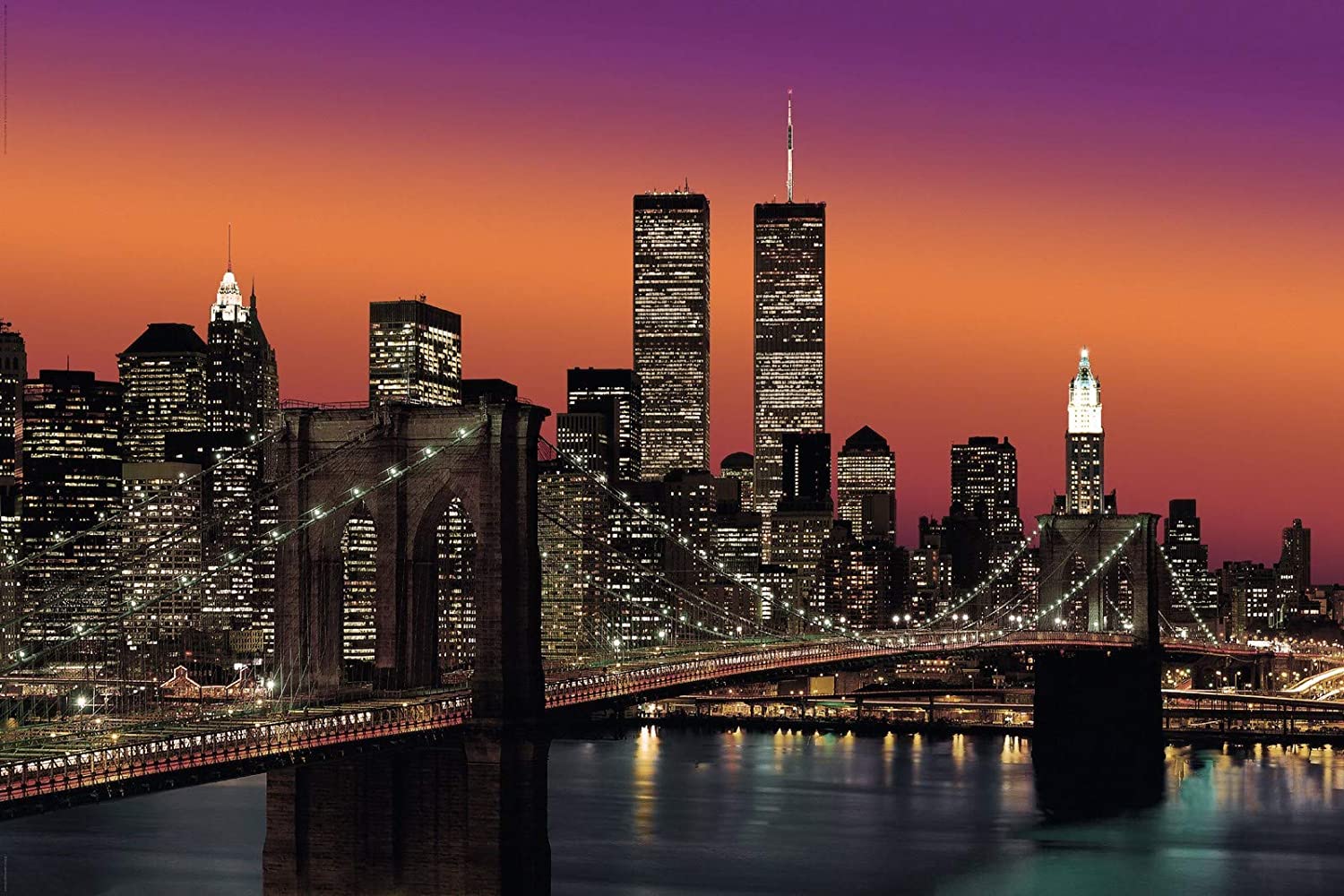
Watching all six seasons in rapid succession also reinforced the recognition of the wide swings in quality from episode to episode. When a show was good, it was very good, but when a plotline didn’t quite gel, the weakened impact was hard to miss.
Some seasons were better than others. Seasons one and two were abbreviated with only eight episodes each. These season served mostly to help the writers get their footing and learn who the characters really were. Season three was the first to be full length–with a total of 23 episodes. Most viewers consider seasons three and four to be the best of the lot, and indeed, this is the run when the show began receiving most of its industry accolades. Season five started off strongly, but began to stumble a bit under the leadership of a new executive producer. The trouble continued into season six, where the show just kind of fell off a cliff. As much as I enjoy Northern Exposure in general, I have to admit to finding it a little difficult to make it through season six. That’s how bad it had become. By then, the show had kind of lost its way.
Northern Exposure was at its best when its used its cast of oddball characters to explore various aspects of the human condition. Each episode made use of a deep undercurrent of subtle humor in its storytelling. But there was always an ever present element of drama as well. All of the episodes unfurled in front of the backdrop of the magical and beautiful Alaskan wild frontier. When these elements were brought together to their fullest potential, television magic would result.
The show really seem to come of age with the final episode of season three, “Cicely.” This episode centers around the founding of the town of Cicely, Alaska in 1909. All of the regular cast members played the parts of the turn of the century pioneering founders. This episode seems to be the one where most everyone began to recognize there was something really special going on with this show.
But there were plenty of episodes and subplots that missed the mark. Some of the things the writers tried just did not work. Throughout the course of the series there were multiple attempts to find humor in unusual deaths. These efforts always fell flat, and they were attempted way too often. The writers even went so far as to saddle poor Maggie O’Conner with a cringeworthy curse that had doomed all of her previous boyfriends to some form of ridiculous demise. As Joel and Maggie pursued their arduous relationship, there were many attempts to mine humor from the question of whether or not Joel would be next.
The relationship between Holling and Shelly is another place where the intended humor often missed the mark. Frequent attempts were made to find comedy in their extreme May-December relationship. There’s no question that Holling and Shelly were portrayed as being truly in love and very devoted to each other, and at times this worked to be very touching–up until the point you were forced to acknowledge what was really going on. It is difficult not to find a scene were Holling cuddles Shelly, while Shelly cuddles a teddy bear, a bit distasteful.
Northern Exposure also gained notoriety as one of the first popular primetime television programs to portray gay marriage (it was actually the second, but the first show was short lived and not well known). In this episode we get to watch two grown men nearly come to blows while engaging in a heated argument over wedding processional music, or floral arrangements, or some such. And there are a handful of episodes that make what can now be seen to be embarrassingly preachy and overzealous environmental doomsday predictions.
But, with Northern Exposure, there is no question that the good makes it worth enduring the bad. And after watching all six seasons on Amazon Prime, it at last dawned on me what is really so special about Northern Exposure. The first glimmer of recognition came while viewing the end of Season 2 Episode 8, “Jules et Joel.” As this episode comes to a close, the characters act out a scene that is very obviously a shout out to the movie version of The Wizard of Oz. The scene is modeled deliberately after the one in the 1939 movie, when Dorothy wakes up back in Kansas surrounded by her friends and family. They even play the song “Somewhere Over the Rainbow” as this episode comes to a close. It turns out I’m not the first to have noticed this…
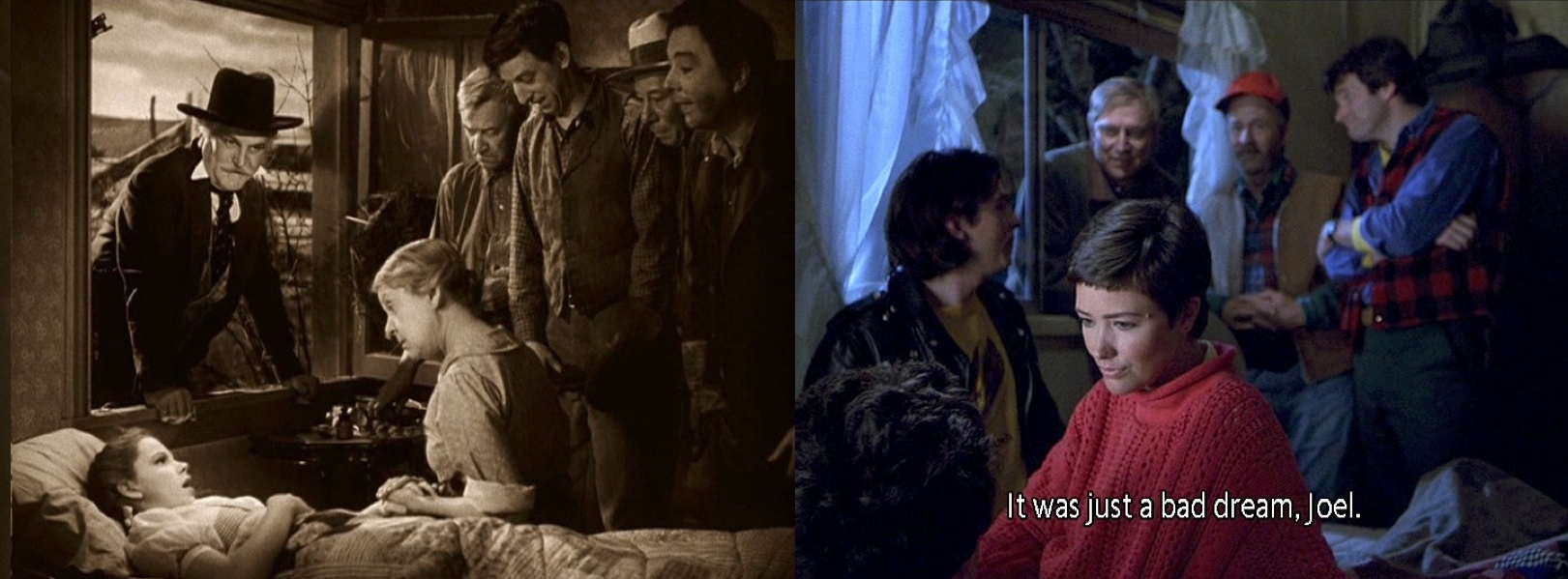
Picture from AlaskanRiviera.com
In retrospect, it becomes obvious that Northern Exposure, in its entirety, is a modern and updated take on a Wizard of Oz type fantasyland. The analogy–while not absolutely perfect–is still pretty good, and extends past this one episode and on to encompass all six seasons of the program.
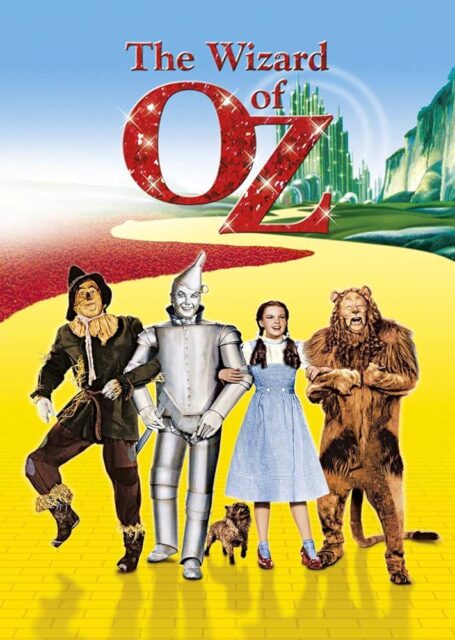
things in common with The Land of Oz!
In Northern Exposure, Dr. Fleischman fills the role of Dorothy, always hoping to make his way back home to New York–which in Northern Exposure does double duty as both Kansas and the Emerald City. Beautiful and exotic Alaska becomes the Land of Oz, full of strange and wonderful people, cultures, and animals. Native American mysticism and dream sequences provide the requisite elements of magic.
In addition, many of the residents of Cicely align nicely with characters from the earlier film. Wealthy and pompous Maurice fills the role of the Wizard of Oz quite nicely. Ed Chigliak might remind you of the good-natured and naive scarecrow, while Chris Steven could well be the big hearted tinman. And then there Maggie O’Conner, whose love/hate relation ship with Joel might convince some to think of her as the Wicked Witch of the West–or maybe Glinda the Good–depending upon your point of view and who your inclined to root for. The show is not nearly as much about life in backwater Alaska, as it is about a wonderful fantasyland filled with magic, mystery, and adventure.
At this point in this writeup you may have come to notice that Northern Exposure is only–at best–distantly and tangentially related to the theme of Dallas/Fort Worth Urban Wildlife. Sure, Alaska represents a grand wilderness and the place is loaded with wildlife, but is that really enough to merit the inclusion on this website? So, why then, an article about the TV show Northern Exposure on the pages of DFW Urban Wildlife magazine?
Well, Cicely, Alaska is not an actual place. It is a fictional town created for the purposes of the TV show. But the town that the producers chose to represent Cicely IS real. The old mining community of Roslyn, nestled in the Cascade Mountains, and located in northern-central Washington State played the part of Cicely, Alaska in Northern Exposure. Roslyn, with its old downtown and quaint neighborhoods, all in front of a backdrop of majestic mountains and beautiful forests, fits the bill just right. In fact, I have heard the expression “location as a character” in reference to Roslyn’s role in Northern Exposure. Roslyn the town was as much a character in this program as any of the human performers. So perfect for the part was this small community, that much of the show’s success can be credited to it.
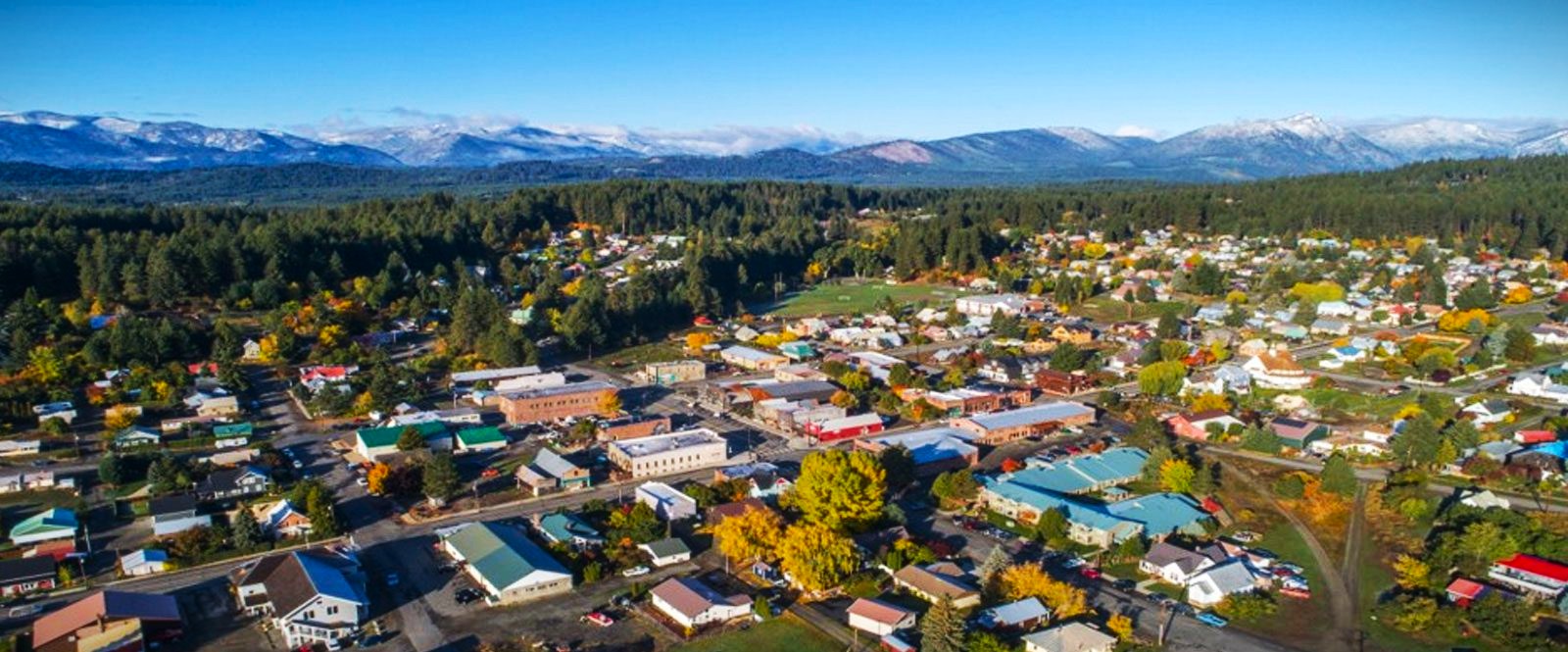
This past summer, I had the opportunity to visit Washington State in the vicinity of Roslyn. While there I made a point of stopping by for a little sightseeing. I explored the town on foot, checking out all of the buildings and houses that were featured in the TV show. We dined at both the Brick and at Village Pizza, and at each place the food was excellent! It was exciting to walk the streets that I had become so familiar with by watching the show, and it was stunning to see just how little the town has changed since the early 1990s. Roslyn today remains a wonderful snapshot in time.
And so explains this article. My goal here was simply to recommend to our audience a TV program they might enjoy.
I also wanted to share a few of my vacation pictures. A brief selection and a guide map can be found below!
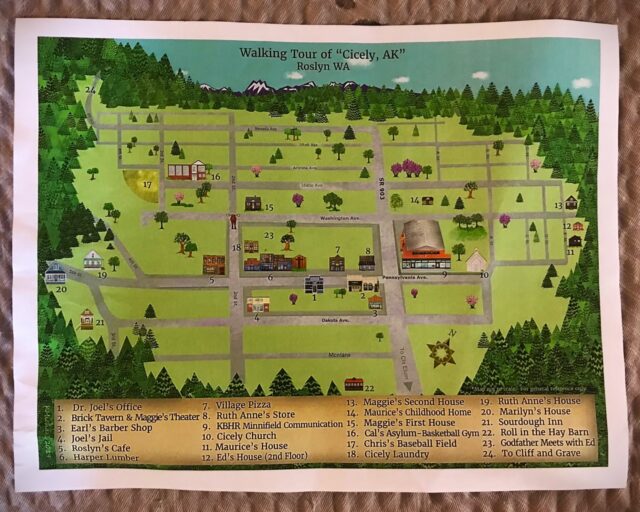
Click Image to Enlarge
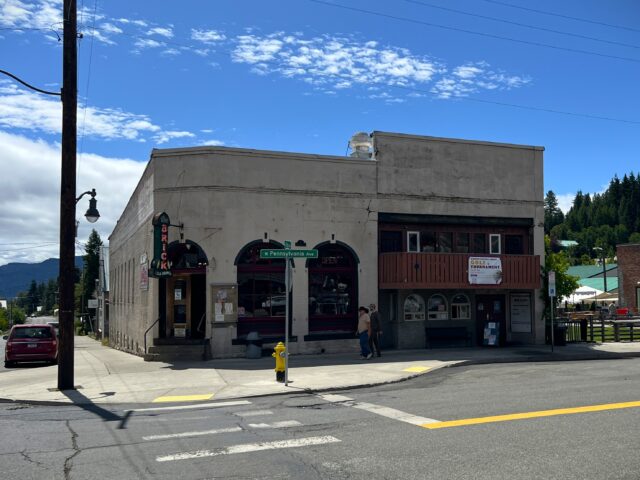
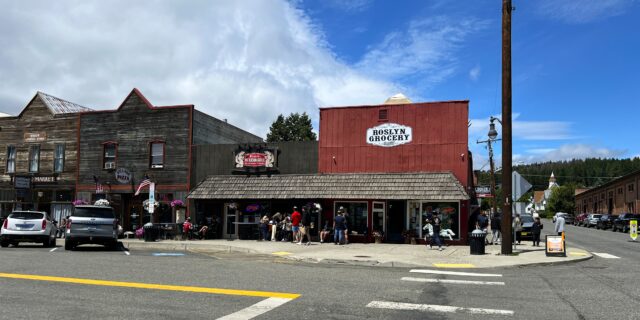
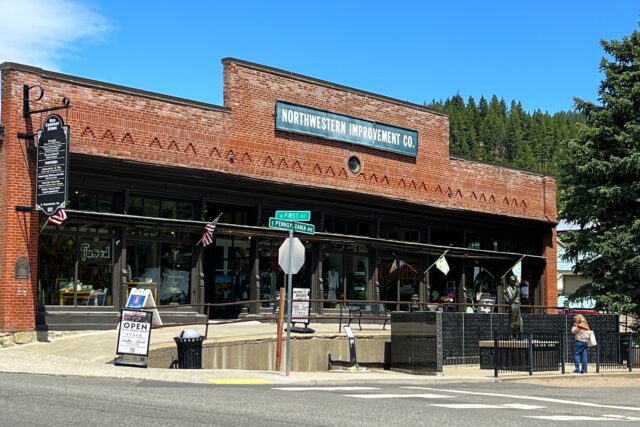
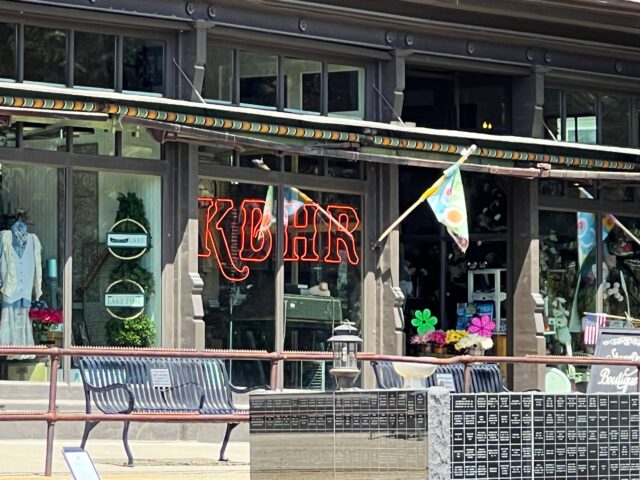
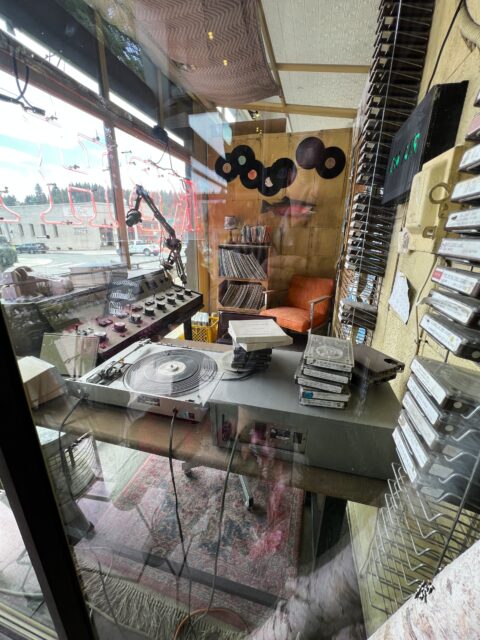
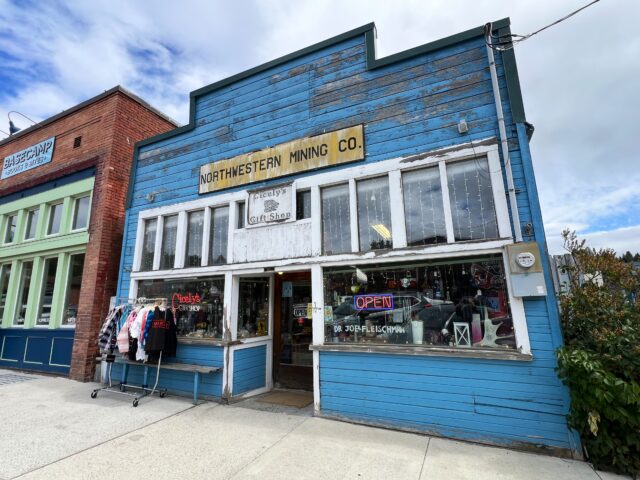
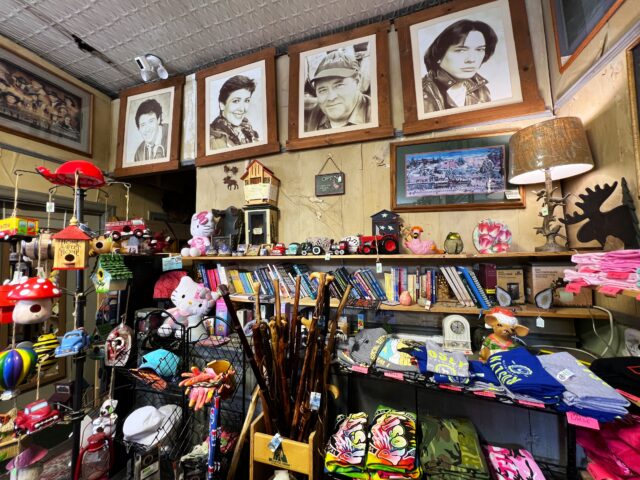
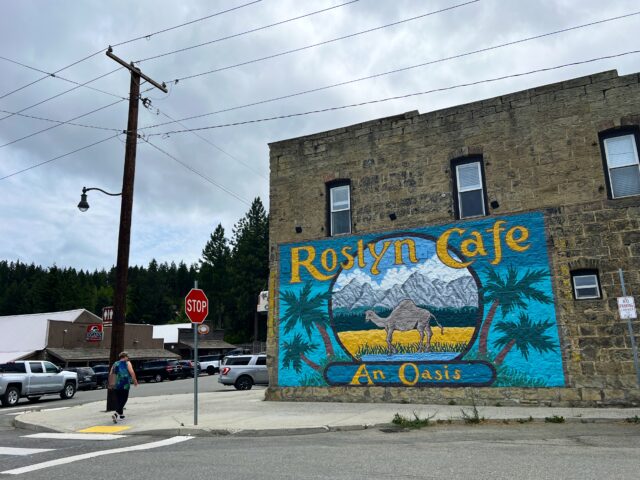
The apostrophe s–added as a running gag for the show–has been removed!
